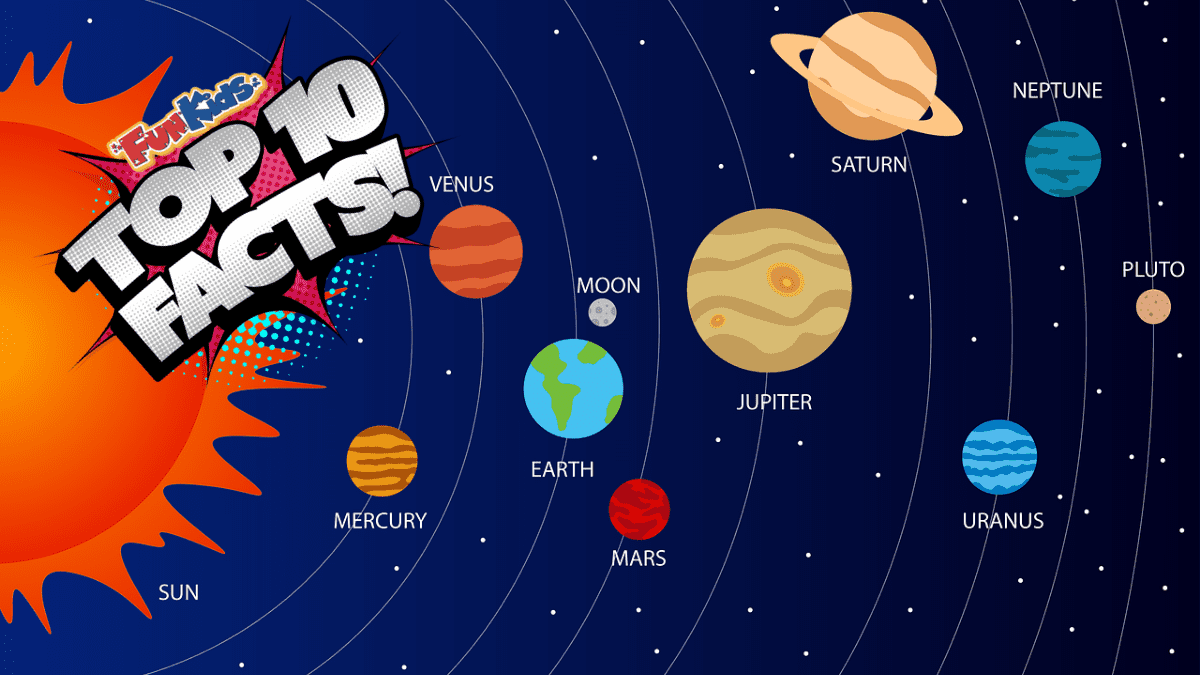The solar system is a wondrous and intriguing subject of study, containing many unique features and facts that continue to captivate scientists and enthusiasts alike. From the vastness of the sun to the mysteries of the Oort Cloud, there is so much to explore and uncover. With eight planets, several dwarf planets, countless moons, and two notable belts, the asteroid belt and the Kuiper belt, our solar system is a complex and diverse place. Despite our advancements in technology, we have only scratched the surface of what there is to learn about our solar system. Whether for scientific pursuits or personal interest, there is always something new and exciting to discover.
10 Fascinating Facts About Our Solar System
The solar system is a mysterious and intriguing area of study for scientists and enthusiasts alike. From the sun to the planets and beyond, the solar system contains many fascinating and unique features. Let’s explore some of these incredible facts!
1. The Sun is the Center of It All
The sun is the central star of our solar system, and everything else revolves around it. It has a radius of approximately 695,700 kilometers (432,288 miles) and provides light and warmth to all the planets in its orbit. The sun is so huge that it makes up about 99.86% of the total mass of the solar system.
2. There are Eight Planets in Our Solar System
Our solar system is home to eight planets, each with unique features and characteristics. Starting with the closest planet to the sun, they are: Mercury, Venus, Earth, Mars, Jupiter, Saturn, Uranus, and Neptune. Each planet has different sizes, compositions, and atmospheric conditions, making them fascinating objects of study.
3. Dwarf Planets Are a Thing
In addition to the eight planets, there are also several dwarf planets in our solar system. These include Ceres, Pluto, Haumea, Makemake, and Eris. While they share many characteristics with planets, they are not large enough to clear their orbits of debris, which is one of the criteria to be classified as a planet.
4. The Kuiper Belt is Home to Many Planetoids
The Kuiper Belt is a region of the solar system beyond the orbit of Neptune, filled with icy bodies and rocky planetoids. It is believed to be the source of many comets that travel through the inner solar system. This region is still relatively unexplored, but scientists are eager to learn more about its composition and features.
5. The Asteroid Belt is Between Mars and Jupiter
The asteroid belt is a region of the solar system between Mars and Jupiter, containing many small rocky bodies called asteroids. These asteroids are remnants from the early solar system and can range in size from several meters to hundreds of kilometers in diameter. Some asteroids have even been classified as dwarf planets, such as Ceres.
6. Jupiter Has the Most Moons
Jupiter, the largest planet in our solar system, also has the most moons. As of 2021, there were 79 confirmed moons orbiting Jupiter, although that number may increase as technology allows for more discoveries. Some of these moons are larger than our own moon and may even have subsurface oceans that could contain signs of life.
7. Saturn’s Rings are Made of Ice and Rock
Saturn is known for its beautiful rings, which are made of rock and ice particles ranging in size from tiny specks to several meters in diameter. The rings reflect sunlight, making Saturn one of the brightest objects in the night sky. Despite their beauty, scientists are unsure how the rings formed and how they have remained stable over time.
8. The Solar System is Moving Through Space
While the solar system may seem static, it is actually moving through space. It is traveling through the Milky Way galaxy at a speed of about 828,000 kilometers per hour (514,500 miles per hour). It takes the solar system about 225-250 million years to make a full revolution around the galaxy’s center.
9. The Oort Cloud is a Hypothetical Shell of Comets
The Oort Cloud is a hypothetical shell of comets surrounding the solar system, believed to be the source of long-period comets that take hundreds of thousands or even millions of years to orbit the sun. The Oort Cloud has never been directly observed, but its existence is supported by observations of comets and their trajectories.
10. Humans Have Explored Only a Small Fraction of the Solar System
Despite our many advances in technology, we have explored only a small fraction of the solar system. We have sent probes and rovers to other planets and even landed humans on the moon, but there is still much to discover. Our solar system is vast and complex, and there are many more mysteries waiting to be uncovered.
Conclusion
Our solar system is a fascinating and complex place, full of wonders and mysteries. From the sun to the outer reaches of the Kuiper Belt, there is always something new to discover and learn. Whether you are a scientist, an enthusiast, or simply curious about the world around you, the solar system is an excellent area of study.
